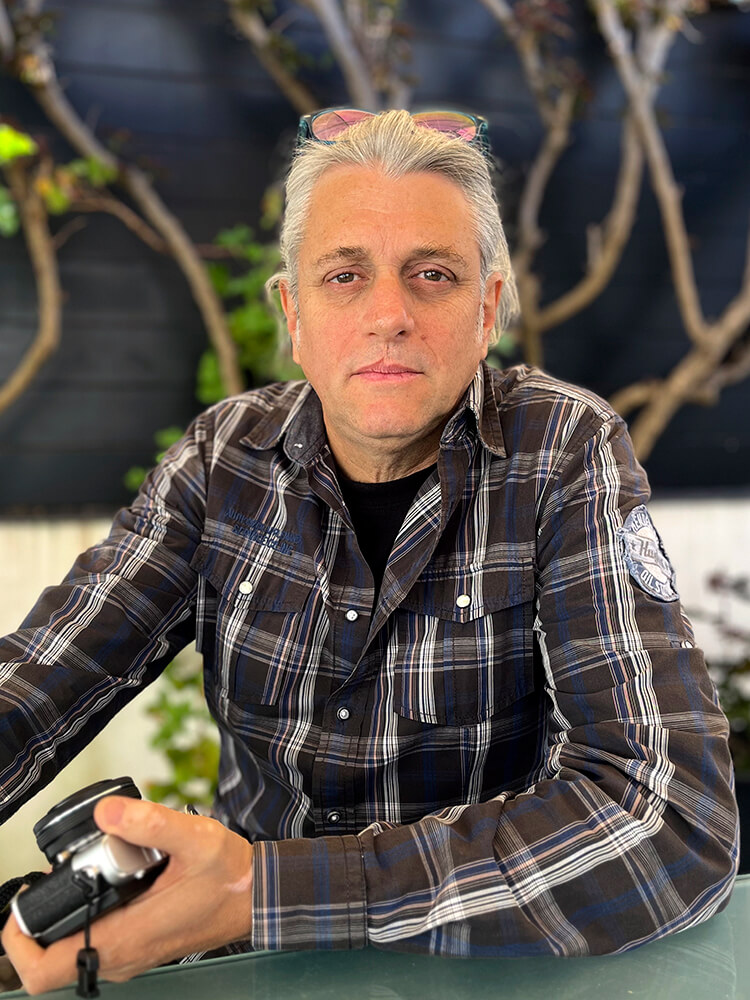Stephanus Meyer was born in Zambia and spent most of his childhood in South Africa. He moved out of Africa at the beginning of the 1980s to live in Spain where he is now based. He is self-taught and always inspired by his obsession with light, shadows, contrasts and the way they come together in his images. Street, social, documentary and fine art photography are his great passion. He has lived in various environments and travelled to many different places, and his camera has taught him to see the world and how people live in it from a different perspective. Street photography has taught him to see. He is inspired by people who simply live their lives. He bought his first camera at the age of 16 and so the journey began; more than 40 years later it is still going strong.
He has participated in numerous photographic events such as the official section of the international Biennial of Photography of Cordoba 2006 and the International Biennial of Photography and Audiovisual Arts of Granada, among others, and has been a finalist in several international competitions such as the Photography Masters Cup (USA), Chelsea International Photography Competition (New York), Fresh M.I.L.K. (New Zealand) and Festimage (Portugal), in addition to a large number of mentions and national awards.
Statement
Street photography is often seen as a simple capture of the everyday moments that unfold in the bustling streets of our cities. Yet, within each frame lies a profound narrative of our times, a visual testament to the lives we lead, the cultures we inhabit, and the stories we weave amidst the urban tapestry.
In my pursuit of documenting the streets, I find myself drawn not just to the fleeting moments of beauty and serendipity, but also to the deeper layers of societal fabric that unfold before my lens. Each photograph serves as a time capsule, preserving not just the faces and places, but the essence of an era; a social document for future generations to decode and understand.
Just as a historian might study the archives for insights into the past, I see my street photography as a form of contemporary historiography. Through the lens of my camera, I strive to capture not just the surface appearances, but the underlying currents of human existence – the way people dress, interact, and navigate the urban landscape.
In this fast-paced world of ever-evolving trends and technologies, street photography offers a grounding force, reminding us of our shared humanity and collective journey. It is my hope that these snapshots of life on the streets will serve as a bridge across time, connecting us to the past, grounding us in the present, and inspiring us to shape a more compassionate and inclusive future.
Series: Crossing the old city from within
Córdoba, a city that was once a melting pot of religions and civilizations lies in the north-central section of the autonomous community of Andalusia in southern Spain. Córdoba was probably Carthaginian in origin and was occupied by the Romans in 152 BC. In 711 it was captured and largely destroyed by the Muslims. Abd al-Rahman I, a member of the Umayyad family, accepted the leadership of the Spanish Muslims rebuilt it and made Córdoba its capital in 756.
The old city has one of the largest Jewish quarters in Europe with its narrow cobble- stone streets and white houses. It leads out towards the Great Cathedral-Mosque and crosses the Guadalquivir river through the Roman arch and bridge.
I have been living here for almost 30 years, and have walked and crossed the old city with my camera many times. This series begins within the Great Cathedral-Mosque and takes us across the old city. As a passionate street photographer I try to capture the beauty and diversity of modern urban life in this ancient area.
My style is unconventional and experimental, as I use a wide angle lens to create images that are distorted, dynamic, and dramatic. I simply walk and shoot and never engage with my subjects. I want the photos to be as natural as possible.
In this series, in post-production, I used various filters to obtain that yellowish colour that for me creates the ancient mood the old city reminds me of when I walk its streets. I want the observer to feel the textures of the old stone, the mood, the pulse of daily life and the incredible light.
